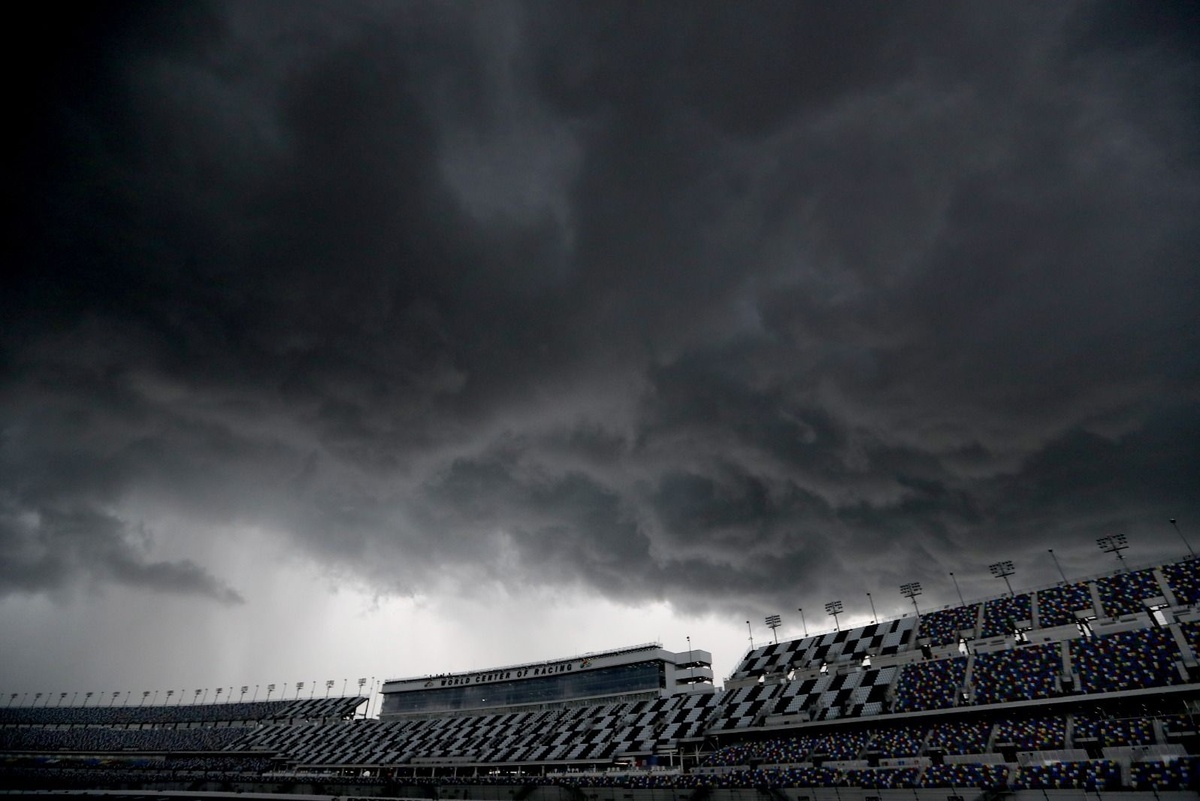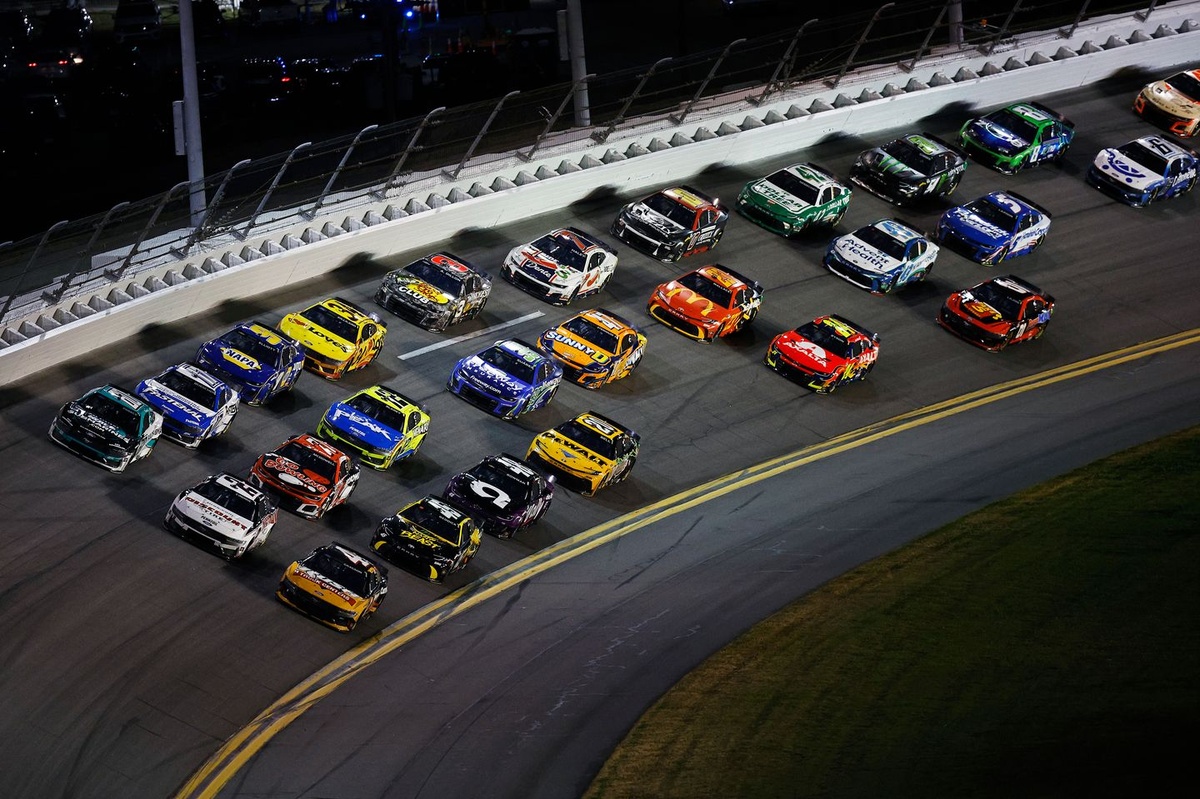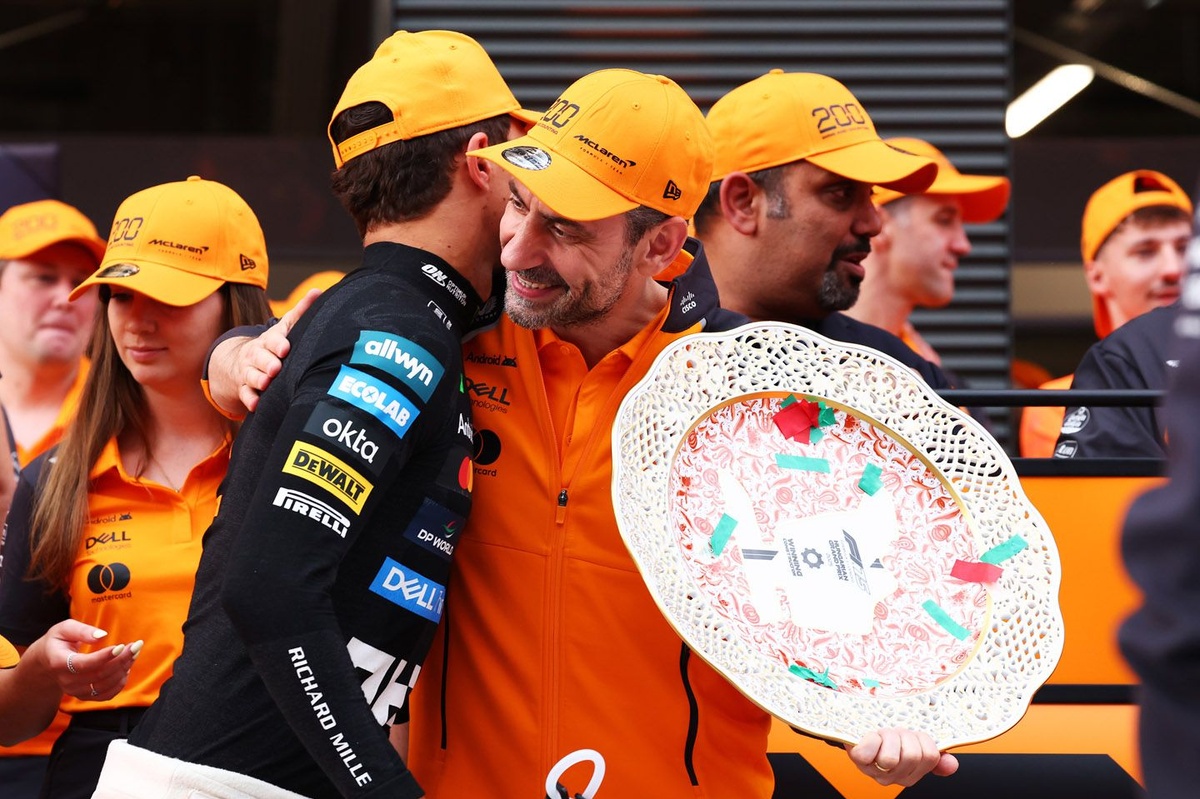“`html
NASCAR Cup Qualifying Canceled at Daytona; Ryan Blaney Secures Pole Position
The NASCAR Cup Series qualifying session scheduled for Friday at Daytona International Speedway was canceled due to inclement weather, specifically lightning in the area. As a result, the starting lineup for the race will be determined using NASCAR’s established metric system, which takes into account various performance factors from previous races. This year’s event features a competitive field, with 40 Cup Series cars and 38 Xfinity Series cars entered, ensuring that all teams will participate without any being sent home due to the rainout.
The decision to use the metric system to set the field is a common practice in situations where qualifying sessions are disrupted by weather conditions. This method not only ensures fairness but also maintains the integrity of the competition, allowing teams to focus on their race strategies instead of worrying about qualifying times.
NASCAR’s Metric System Explained
NASCAR employs a specific formula to determine the starting positions when qualifying is not conducted, which is particularly relevant in the unpredictable environment of motorsports. The metric system is based on a weighted average of several components:
- Fastest Lap Times: 15% of the fastest lap times from the driver’s previous race.
- Driver’s Finishing Position: 25% of the driver’s finishing position from the most recent race.
- Owner’s Finishing Position: 25% of the owner’s final race finishing position from the previous race.
- Points Position: 35% of the driver’s current points standing in the Cup Series.
This metric system aims to provide a fair and consistent method for setting the starting lineup, especially in unpredictable weather scenarios that can impact qualifying sessions. It also reflects the ongoing evolution of NASCAR, which has adapted its rules and procedures to enhance competition and maintain fan engagement.
Ryan Blaney’s Pole Position
As a result of the metric calculation, Ryan Blaney has secured the pole position for the race. Blaney’s strong performance in previous races has positioned him favorably, allowing him to start at the front of the pack. This is a significant advantage, as starting from pole can lead to better control of the race dynamics and strategy from the outset.
Blaney’s team has been performing well this season, showcasing a blend of speed, strategy, and consistency that has made them a formidable contender. This pole position could be a critical factor in their strategy for the race, as starting at the front allows drivers to avoid potential early-race incidents that often occur in the middle or back of the field. Moreover, it enables the driver to dictate the pace and establish a rhythm early on, which is crucial in a high-stakes environment like Daytona.
The Impact of Weather on NASCAR Events
Weather conditions play a crucial role in NASCAR events, particularly at tracks like Daytona, where summer storms can develop rapidly. Lightning, in particular, poses a safety risk, leading NASCAR officials to prioritize the safety of drivers, teams, and fans by canceling qualifying sessions when necessary. The organization has established protocols to manage weather-related disruptions effectively.
In addition to lightning, rain can also lead to delays and cancellations. NASCAR employs advanced radar technology to monitor storm systems, allowing officials to make informed decisions about race activities. This proactive approach has become increasingly important in recent years as weather patterns have become more erratic, impacting race schedules and fan experiences.
Looking Ahead: The Race at Daytona
The race at Daytona is always a highlight of the NASCAR Cup Series calendar, attracting significant attention from fans and media alike. Known for its high speeds and competitive nature, Daytona presents unique challenges for drivers, including the need for precise drafting and strategic positioning throughout the race. The iconic 2.5-mile tri-oval track is notorious for its ability to create thrilling racing and dramatic finishes, making it a favorite among both participants and spectators.
With Blaney starting from pole, the focus will be on how he manages the early laps and whether he can maintain his lead against strong competitors. Other notable drivers in the field, including former champions and rising stars, will be looking to capitalize on any mistakes made by those at the front, making for an exciting race atmosphere. The strategy will play a crucial role, as drivers will need to decide when to pit, how to navigate the draft, and when to make aggressive moves without jeopardizing their positions.
Conclusion
The cancellation of qualifying due to lightning at Daytona underscores the unpredictable nature of motorsport, where weather can significantly impact race day procedures. Ryan Blaney’s pole position, determined through NASCAR’s metric system, sets the stage for what promises to be an engaging and competitive race. As teams prepare for the challenges ahead, fans can look forward to an exhilarating event that showcases the skill and strategy that define the NASCAR Cup Series.
As the race unfolds, all eyes will be on the drivers as they navigate the complexities of Daytona, balancing speed, strategy, and teamwork in pursuit of victory. The anticipation builds as fans eagerly await the green flag, ready to witness the next chapter in NASCAR’s storied history.
“`




